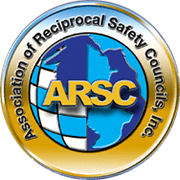By Bennett Roberson, CSP, CESCP
Director of Business Development, Gulf Coast Safety Council
In the field of Electrical Safety there are, like other disciplines, many terms and acronyms that are frequently used which may have the unintended effect of confusing, or at a minimum, be misleading for some at times. Terms such as Qualified and Unqualified leave many employers “Uncertain” as to where their employee’s skill level and experience leave them in regard to the OSHA standards. Is the journeyman electrician that has been with the company for 15 years qualified? They are licensed by a third party, and have worked on various projects over the years which has given them a broad base of knowledge and skills. Surely, they must be considered “Qualified.” Or are they……
Let’s start by taking a look at OSHA’s definition, in the General Industry Standard, of a Qualified Person for Electrical Work – “One who has received training in and has demonstrated skills and knowledge in the construction and operation of electric equipment and installations and the hazards involved.” Although this may appear to be a concise description of what constitutes a Qualified Person, OSHA goes on to expand on the requirements.
Note 1 to the definition of "qualified person:" “Whether an employee is considered to be a "qualified person" will depend upon various circumstances in the workplace. For example, it is possible and, in fact, likely for an individual to be considered "qualified" with regard to certain equipment in the workplace, but "unqualified" as to other equipment. (See 1910.332(b)(3) for training requirements that specifically apply to qualified persons.)”
Note 2 to the definition of "qualified person:" “An employee who is undergoing on-the-job training and who, in the course of such training, has demonstrated an ability to perform duties safely at his or her level of training and who is under the direct supervision of a qualified person is considered to be a qualified person for the performance of those duties.”
OSHA does not give a definition for an Unqualified Person in 1910 Subpart S, but does address requirements to protect these individuals in the workplace; “Additional requirements for unqualified persons. Employees who are covered by paragraph (a) of this section but who are not qualified persons shall also be trained in and familiar with any electrically related safety practices not specifically addressed by 1910.331 through 1910.335 but which are necessary for their safety.”
The National Fire Protection Association, commonly referred to as NFPA, is a global leader in the advancement of safety in many areas such as fires, explosions and electrical hazards. NFPA 70®, National Electric Code, covers not only requirements for electrical equipment installations and maintenance, but also for electrical safety in the workplace. NFPA 70E®, Standard for Electrical Safety in the Workplace, has been helping to protect workers from its inception in 1976. Since that time NFPA 70E® has become one of the most widely used standards by employers and employees alike to perform work safely when dealing with electrical hazards. So how does NFPA 70E® classify an individual as a Qualified or Unqualified?
Qualified Person. “One who has demonstrated skills and knowledge related to the construction and operation of electrical equipment and installations and has received safety training to identify the hazards and reduce the associated risk.” This definition is very similar to that of OSHA. Note that both refer to construction and operation of electrical equipment, training, skills, knowledge, and hazards.
Unqualified Person. “A person who is not a qualified person.”
NFPA 70E® also specifies “Unqualified persons shall be trained in, and familiar with, any electrical safety-related practices necessary for their safety.”
To achieve a clearer understanding of how to determine if an employee is Qualified or Unqualified the NFPA 70E® Handbook for Electrical Safety in the Workplace, 2021 edition, describes it like this, “Any person who has not received the specific training necessary to perform a task or to recognize when an electrical hazard exists and how to avoid that hazard or who has not demonstrated their ability to perform a task is an unqualified person. An employee qualified to perform a specific task might be unqualified to perform other tasks. The characteristics of being qualified and unqualified are task-dependent.”
So, what does this all mean? Simply put, for any employee to be considered Qualified for particular equipment or tasks, they must be trained, not only on the equipment or task, but to identify hazards and ways to eliminate or mitigate them. NFPA 70E® goes into greater detail for training in 110.6 Training Requirements, as does OSHA in 1910.332. While OSHA 29CFR1926 Construction, Subpart K – Electrical, does not address training requirements, it can be found in 1926.1408 Power line safety. Of course, as a general rule, 1926.21 Safety training and education covers general requirements and employer responsibilities for employee training for construction.
One more item to remember, ensure that your company keeps a record of this training. Not only for skill verification purposes, but for inspection or auditing requirements. As the old saying goes, “If it’s not documented, it didn’t happen.”
